Taking Silicon Valley to Napa Valley, and other ways to host clients

CEO Mark Orttung shares his experience taking a top client to Napa Valley and hosting them in a hospital basement.
In 2016 we introduced our client, the leadership team of a division of a Fortune 500 life sciences company, to seven startups – in the basement of a hospital in Silicon Valley. Our goal was to change how a prestigious client viewed us. Giving the team an opportunity to see where emerging tech could take healthcare was a fantastic way to do this. We were behaving like a leading global consulting firm, even though we were still unknown with around 250 employees.
It was important we stood out to our client as a strategic partner - far more than a staff augmentation provider (as discussed in my last article). We wanted to be seen as experts in the current technological landscape – showing where leading edge tech was heading and how to apply it to our client’s industry. We hoped their leadership team would spend the time with us thinking through their strategic plans, consequently buying more work from us in the next year or two.
We'd held innovation days with other clients and had developed a pattern. We’d find an accelerator that had a great space to host the day and spend a lot of time researching startups that would be a good fit for the client. We’d pack day one with content (possibly too much content) to get everyone thinking about what was possible. On the second day, we’d take the client team to Napa Valley (the icing on the cake).
In truth, it was day two that really helped us sell the whole thing as many clients wanted to spend a day in wine country. But it also had the effect of letting them relax and unpack the content from the first day together. This often led to some great plans going forward that we could help execute.
Finding appropriate startups at exactly the right stage of their development was not easy:
- The startup needed to possess solutions that were relevant to our client – in this case, direct applications to healthcare;
- Their solution had to be visually appealing and get people thinking. In other words, it had to demo well – data and analytics tend to put people to sleep;
- The startup’s founder or leader would have to present on the day. These people typically have a passion that really lights up a room;
- Their technology had to already be in production so that our client could immediately put it into their business to create an impact.

Our two day event
For this particular innovation event, we found an accelerator that was housed in the basement of a hospital in Mountain View. While many of these innovation days required us to search for startups that would be a good fit for the presentations, this accelerator luckily had a large list of companies that were very interesting. One of the startups took 2D scans of a patient’s heart and stitched them together to form a 3D model. A surgeon could then rotate, enlarge, and explore different layers. In surgery, it saved countless hours trying to build a picture of precisely where the issue lay. Another startup had a simulator of a newborn and the many different issues that might develop immediately after birth, the goal being to train doctors and nurses to deal with time-critical issues as a team. This was especially valuable to hospitals outside of major metro areas without on-hand access to all specialists, so that they could handle issues immediately.
For the Napa visit, our sales leader had a contact who was a wine distributor. The distributor had an extensive network of wineries he bought from. It wasn't his business to set up tours, but because of his network, he was able to get us into some of the most sought after places. I'm not sure that our clients really understood how difficult it would’ve been to get into some of these wineries without these connections. The owner and winemaker would often join us and talk about their products too. It always made for a special day.
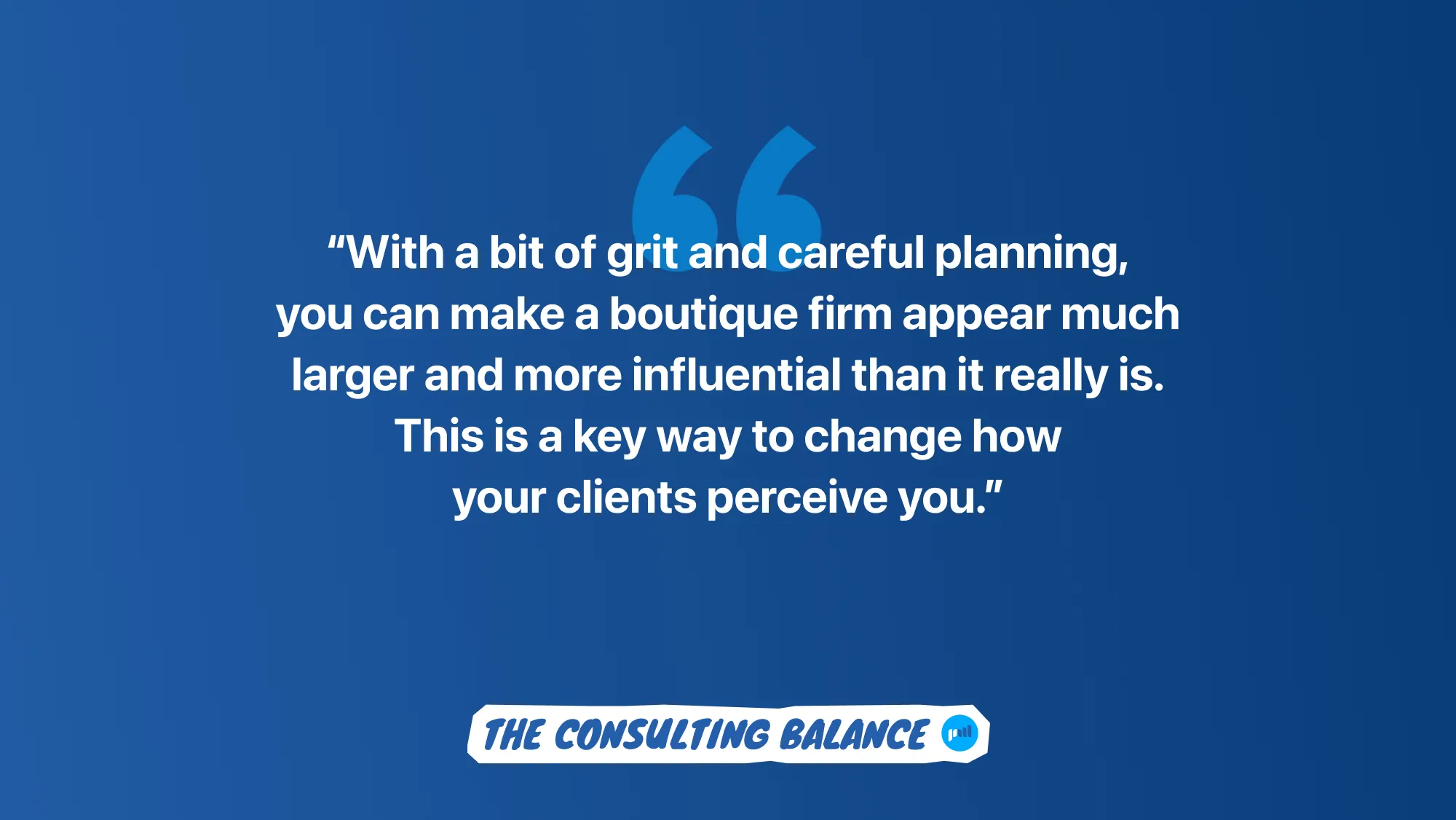
Applying big firm thinking when planning your event
The fundamentals of these innovation days came from my time at Andersen Consulting (now Accenture). They had a suite of industry-specific showcases that took new technology and dropped it into the context of that industry. They had a “store of the future” for retail, a “factory of the future” for manufacturing, and so on. Groups of executives would be invited to these offsites to inspire them to make strategic plans for how to use the technology. Early in my career I spent a few years working in a technology-focused center in Silicon Valley that ran this same model. I really saw the value in it. I knew that Nexient couldn’t come close to the dollars a global firm would put into something like this, but I believed that if we were scrappy, we’d be able to achieve the same result.
In many ways, I felt that we had actually surpassed Accenture’s model. By leaning on different accelerators and tapping into the startup ecosystem, we were actually displaying tens of millions of dollars of investment to our clients. As each innovation day was bespoke, we could pull in different startups that were best suited to that client. Curating the experience and planning the events was not easy, but the investment we were able to share with our clients was actually orders of magnitude more than what a global firm could bring.
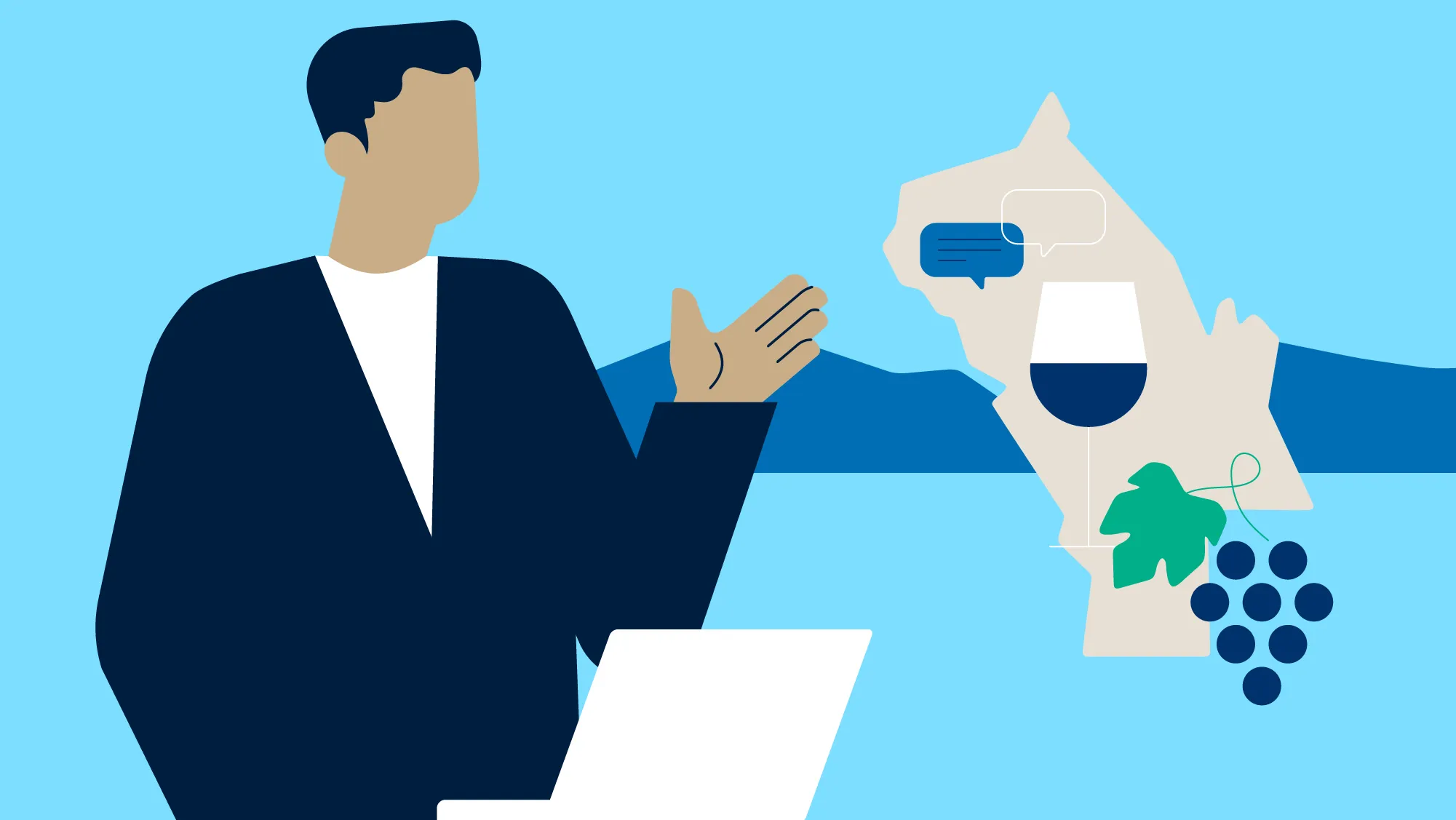
Generally, client feedback was extremely positive. One funny comment stands out to me that was perhaps not so glowing though. After the day in the hospital basement, one client pulled me aside and asked if we could do the next one somewhere more beautiful. As he put it, “we have hospital basements in New Jersey too.” I think we made up for that the next day in Napa Valley, and I was happy to hear there’d be a next one for him, but it helped to shape where we took these events over time.
It was a ton of work, but one by one, we were changing how our clients saw us. By the end of these innovation days, we were more than a staff augmentation firm to our clients. We were their strategic partner with great connections in both Silicon and Napa Valleys.
Some thoughts to take with you
I’d recommend hosting client innovation days if you’re keen to be seen as an indispensable strategic partner. Here are a few final thoughts:
- Give your client leaders an opportunity to spend time offsite, thinking about long term strategic goals – with you there. Not only is it refreshingly different from their daily responsibilities, it places you with them in their future.
- People often struggle to see how new tech will change their world. Find practical examples of tech in their industry. This will create an “aha moment” to help them quickly move forward. As someone who has been immersed in technology my whole career, I often forget this.
- With a bit of grit and careful planning, you can make a boutique firm appear much larger and more influential than it really is. This is a key way to change how your clients perceive you. We were able to put tens of millions of dollars of other people’s investments in front of our client. Simply by taking the initiative and organizing it, we got a lot of credit.
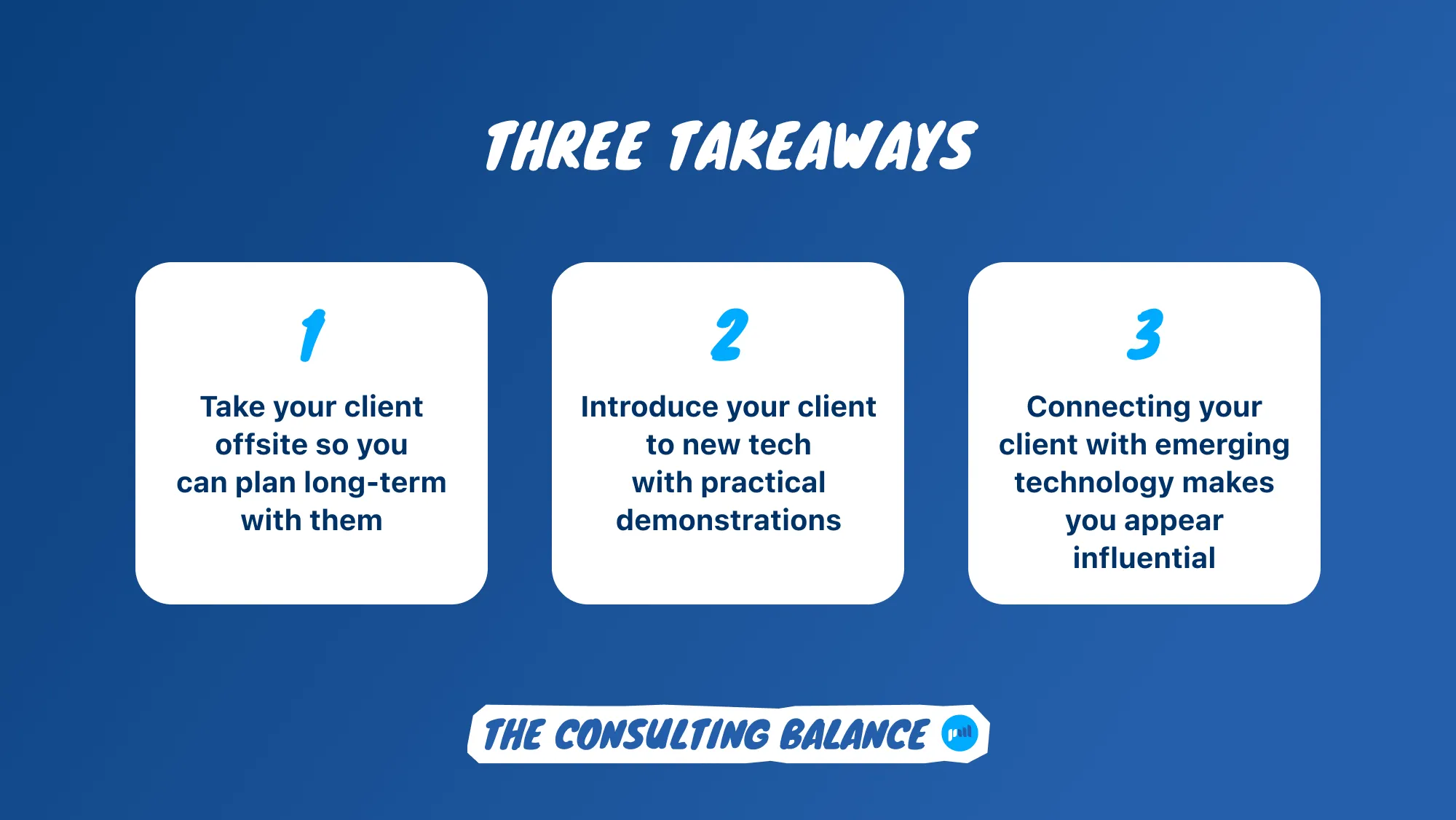
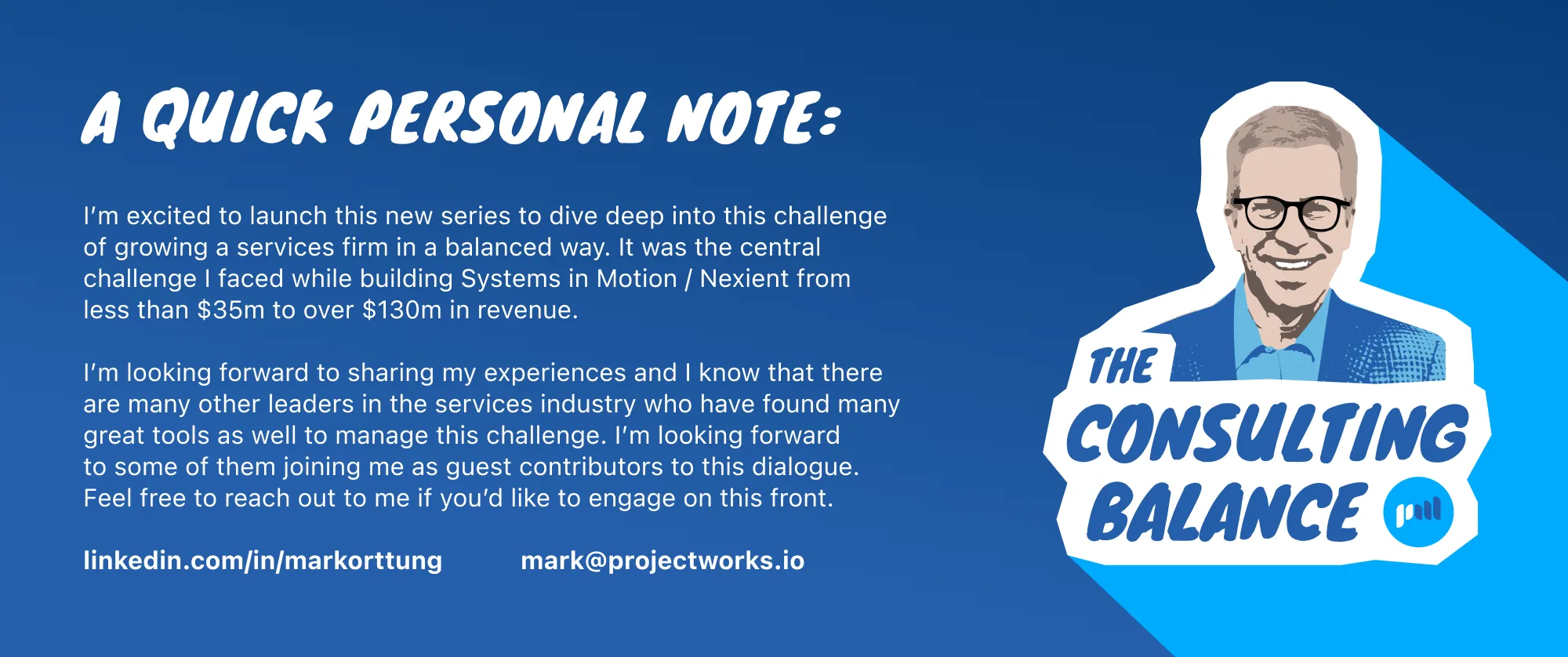
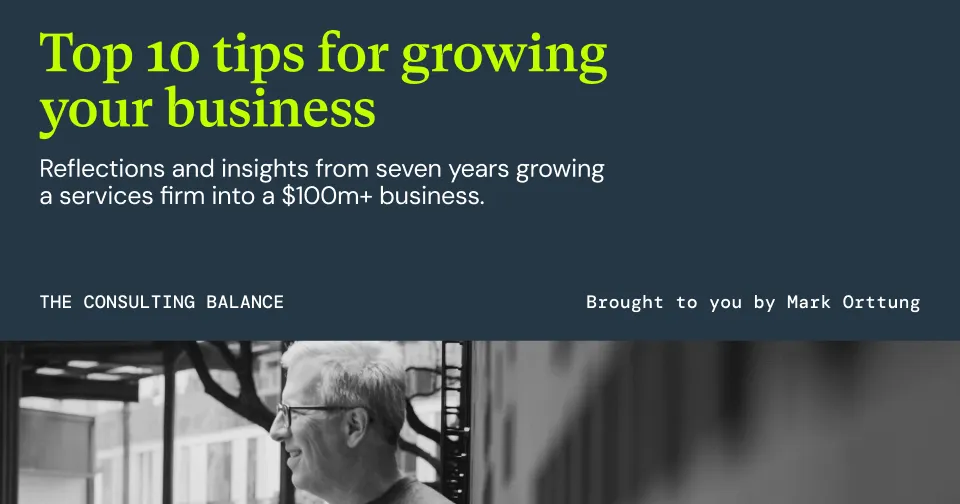
.webp)
